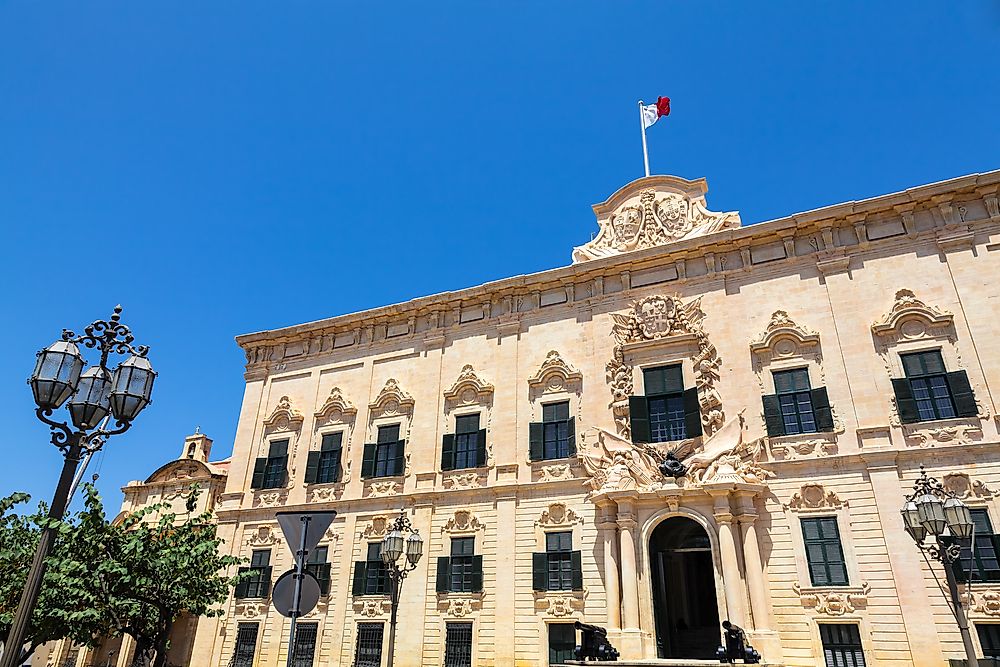What Type Of Government Does Malta Have?

Malta is an island country within the Mediterranean Sea, south of Italy. The country is about 122 square miles with a population of about 400,000 people. Malta gained independence from the United Kingdom as a sovereign Commonwealth realm on September 21, 1964, and became a Republic in 1974. It is one of the member states of the Commonwealth of Nations. Malta’s parliamentary system and public administration closely resemble the Westminster’s system. It conducts its politics in the context of a parliamentary representative democratic republic with the three levels of government. Malta’s local government system is similar to the European Charter of Local Self-Government.
The Executive Branch Of The Government Of Malta
Until December 1974, Malta was a constitutional monarchy with Queen Elizabeth II as the sovereign. The executive authority was exercised by the Governor-General on her behalf while the Cabinet run the affairs of the government under the leadership of the prime minister. In December 1974, Malta became a republic with the Constitution revised. The executive power is now vested in the president who is elected to a 5-year term by the House of Representative and his role as the head of state remains largely ceremonial. He appoints the prime minister from the majority party in the House. He also appoints cabinet ministers in consultation with the prime minister. The ministers are appointed from the members of the House of Representative. The prime minister of Malta heads the government and cabinet. The prime minister also can advise the president to dissolve the House of Representatives.
The Legislative Branch Branch Of The Government Of Malta
The legislative powers are exercised by the parliament consisting of the president and a unicameral House of Representative known as the Kamra tad-Deputati. The House is made up of 65 legislatures but a party can have additional members to the House to ensure a parliamentary majority if it wins an absolute majority of votes but is lacking majority seats in the House. Members are elected to the House from the 13 constituencies with each constituency returning 5 members. Malta does not hold any by-election between general elections instead, vacancies are filled by co-option. The parliament’s term cannot exceed five years but can be dissolved earlier by the president upon the recommendation of the prime minister. The House of Representatives legislates, enacts, and amend laws as well as approves presidential appointments such as the cabinet minister. The Parliament also elects the president.
The Judicial Branch Of The Government Of Malta
The judiciary comprises of the Inferior Courts, Court of Appeal, and the Constitutional Court. The magistrates are in charge of the Inferior Courts. Criminal Court consists of a judge and a jury while the Court of Appeal hears civil and criminal appeals. The Constitutional Court is the highest court in Malta and mainly adjudicates cases involving constitutional interpretation and human rights violation. The Chief Justice and Judges of the Superior Courts are appointed by the president in consultation with the prime minister. The judges have a security of tenure until their mandatory retiring age of 65. However, they can be impeached by the House of Representative based on their inability to perform their duties or misconduct.











